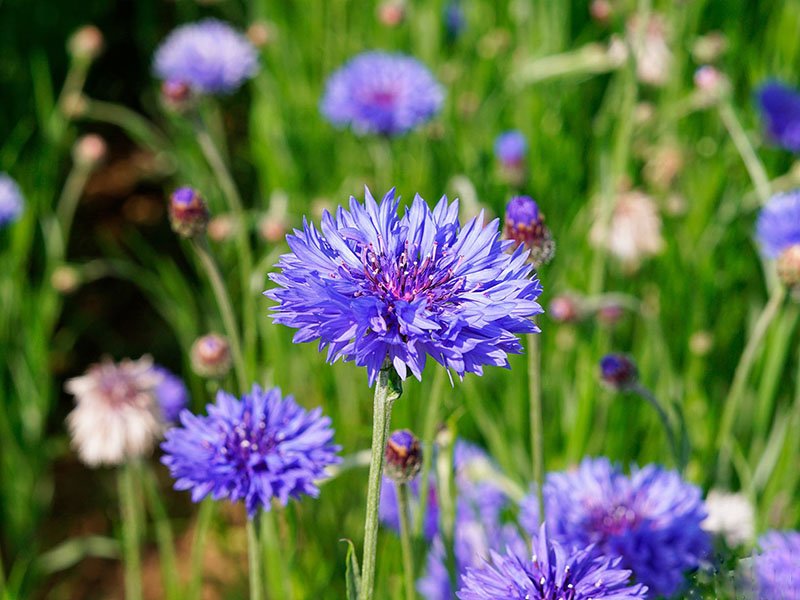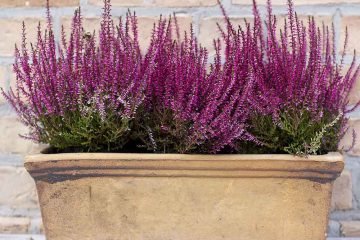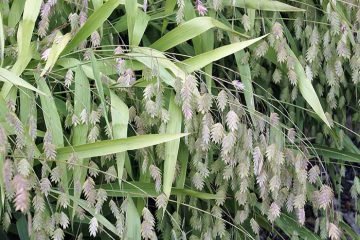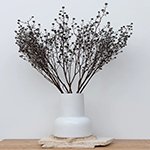Corn flower specifications
- Scientifically name : Centaurea cyanus
- Order : Asterales
- Family : Asteraceae
- Genus : Centaurea
- Species : C. cyanus
- Native : Asia and Europe
- Other name : bachelor’s button
Corn flower is an annual or perennial plant of the genus centaurea and has a branched stem 25 to 80 cm high. The stem of this plant is greenish white. The leaves are lanceolate and 1–4 cm long. The flowers are most commonly an intense blue colour and arranged in flowerheads (capitula) of 1.5–3 cm diameter, with a ring of a few large, spreading ray florets surrounding a central cluster of disc florets. The blue pigment is protocyanin, which in roses is red. Fruits are approx. 3.5 mm long with 2–3 mm long pappus bristles. It flowers all summer.
read more : Everything about hydrangeas : How to Plant & care for Hydrangea

This plant grows in Asia and Europe and in some books this plant has been introduced as native to Turkey and Greece, but in general throughout Europe, which has a temperate climate, it is widely used in grain fields, along roadsides and hills.
In what areas do corn flowers grow?
In addition to Europe, the corn flower plant is widely grown in Asia, the Americas and Australia. This plant grows in the northern regions of Iran, Alborz region, around Tehran, Baluchistan, Khorasan, Kurdistan, Kermanshah. In Azerbaijan it can be seen in any barren land.
Iran dried corn flower
Corn flower is one of the most valuable medicinal plants that is grown in Iran by wild flower and can even be cultivated. This plant species has been the basis for the production of many types of drugs in the world that are used in traditional medicine.
In addition to its decorative aspect, dried corn flower is also used in traditional medicine and the pharmaceutical industry. The reasonable price of dried corn flower has made the sale and purchase of dried corn flower for export a huge profit for exporters and wholesalers of dried corn flowers.
read more : Drying natural flowers | Introducing 8 wonderful ways to dry flowers
Types of Cornflower
Most people are drawn to traditional vibrant blue cornflowers. You’ll often see this variety cropping up along roadsides or in the pastures of rural areas. However, other cultivars lend an equally attractive appeal, blooming in colors of white, pink, or red.
Below are a few of the favorites :
- An heirloom variety, ‘ Blue boy ‘ boasts thistle-shaped flowers of periwinkle blue. Plant this variety early in the spring for a show-stopping landscape display.
- The ‘ Tall Double Mixed ‘ series provides a great option for a cutting garden, as the blooms of white, pink, and blue make attractive dried arrangements.
- The striking ‘ Blackball ‘ variety provides an nontraditional option, complete with crimson poms that hold nectar coveted by birds.
- ‘ Dwarf Blue Midget ‘ works well in beds and borders and begins blooming when the plant is 6 inches tall. This variety tops out at 12 inches, making it an excellent choice for containers.
- The ‘ Burgundy Beauties Mix ‘ includes plants that produce three colors of blooms: burgundy and white bicolor flowers, solid burgundy flowers, and burgundy flowers with white tips.
read more : Everything about mallow flower : How to Plant & care for them
Care of Corn flower Plants
Cornflower is a versatile plant with many uses in the landscape and in the home. Consider adding it to an ornamental vegetable garden, as the nectar content will attract pollinators that boost the yield of tomatoes, squash, and other plants that rely on them. Add cornflower to a wildflower garden to attract bees and butterflies. Or, include blue cornflower in a cutting garden paired with annuals like orange cosmos or yellow marigolds.
Like most common annuals, cornflower can be purchased as a nursery start, but it is also very easy to grow from seed. Grow it among other sturdy perennials, like rudbeckia or coneflower, that will act as natural supports for the stems. You can also stake the plant to avoid flopping.
Cornflower typically blooms for about 10 weeks (from May to mid-July), but you can increase the bloom time by deadheading spent flowers. Seeding the flower on a spaced-out schedule of every two weeks will also extend bloom time. Cornflower makes an excellent cut or dried flower. Cut the blossoms in their prime before they begin to wilt.
-
Light
Cornflower prefers full sun but it will tolerate a bit of shade in the afternoon, especially during the dog days of summer. Shady conditions all day cause the plant to grow leggy and prone to flopping.
-
Soil
Cornflower grows best in rich, well-drained garden soil, on the alkaline side, with a pH of 7.2 to 7.8. If your soil tends toward acidic, add crushed limestone to your garden beds
-
Water
Cornflower needs the equivalent of 1 inch of water per week, especially during the hottest months of July and August. Allow the soil to dry slightly in between waterings, but don’t let it dry completely or the plant will flop. If this happens, a good, thorough drink will usually perk it up.
-
Temperature and Humidity
When it comes to temperature, cornflower tolerates both a light freeze as well as a hot summer day. This plant thrives in 60 F to 80 F temperatures, but may need 85 F to 95 F to reach flowering maturity. Cornflower grows best with an average humidity range of 30 to 50 percent. Keep a close eye on your garden during humid spells, though, as this plant is susceptible to fungal disease under these conditions.
-
Fertilizer
Iif your soil is poor, fertilize your cornflower monthly with diluted liquid manure or compost tea. Start fertilizing in the early spring when the baby plants are 6 inches tall, and continue throughout the summer. If you have rich soil, you don’t need to feed your flowers at all. Often mixing a bag or two of compost into the soil before sowing is enough for the entire season.
read more : Everything about pot marigold flower : How to Plant & care for them
Pruning
While not necessary for proliferation, pruning a patch of cornflower can extend its bloom time. To do so, trim the long stems back to the secondary stems once the plants’ first flowering period is over ( usually around mid-summer ). After the second bloom, cut the plants back to the ground or you can pull them out from the roots to open up space for late-season plantings.
How to Grow Cornflower From Seed
As you might expect from a plant that self-seeds so readily, it’s easy to propagate cornflower from seed. You can collect your own seeds from dried flower heads and store them over the winter until planting time. Or, you can also buy large, inexpensive packets of cornflower seeds.
Here’s how to grow cornflower from seed :
- Sow seeds in late spring directly into the garden after the last frost. ( Don’t be concerned about planting too early; Mother Nature will tell the seeds when to germinate. )
- Cover the seeds with 1/2 inch of soil and keep the seedbed watered and moist until germination occurs ( usually within 10 days in warm temperatures ).
- Once sprouted, thin the seedlings to increase both blooming and vigor in the plants.
You can also start seeds indoors to ensure early flowering. Do so six to eight weeks before the last expected frost using a seed-starter mix in a seedling tray. Keep the soil moist and warm until the seedlings sprout, and then grow them in a bright location or sunny window until it’s safe to transplant them outdoors.
read more : Everything about lavender flower : How to plant & care for them
Potting and Repotting Cornflower
When growing cornflower in pots or containers, make sure to keep the soil on the dry side to mimic pasture conditions. Porous clay or terracotta pots are best. Choose well-drained soil with perlite, or use a soilless medium made from organic material (similar to a cactus potting mix). Deadhead your potted cornflower for a tidy appearance, and be prepared for a short flowering season when grown this way.
Common Pests & Plant Diseases
An annual with a short growing season, cornflower rarely suffers from serious insect or disease problems. Still, when kept in wet, humid conditions, powdery mildew can occur late in the season, appearing as white spots on the leaves. This fungus rarely kills the plant and treatment is usually not necessary since the plant’s lifecycle is short-lived anyway.
Aphids and mealybugs rarely, but sometimes, appear on a crop of cornflower. Control them by reducing the population with bursts of water from the garden hose. Avoid spraying pesticides around cornflowers, even organic ones, as both are harmful to bees and other pollinators that feed on them.
How to Get Cornflower to Bloom
Cornflower blooms best in bright and sunny conditions, so make sure to always plant your crop in an area that receives a lot of sun. Deadheading may encourage more flowering, but with this particular annual, the practice is deemed unnecessary. If your cornflower is not showing blooms due to insufficient light, the only thing you can do is plan better next year and seed them in a sunnier spot.
Common Problems with Cornflower
Although rare, cornflower can fall victim to fungal infections when overwatered and crowded. Make sure to adhere to watering recommendations and thin seedlings to allow for proper airflow around the mature plant. In drought conditions, cornflower is prone to wilting, which can cause your crop to fall over and look unsightly. Usually, a good drink is all that is needed to perk them up.
read more : Everything about sea lavender flower : How to Plant & care for them
FAQ
-
What’s the difference between Centuarea Cyranus (typical cornflower) and Centuarea Montana ( mountain cornflower ) ?
Centaurea cyanus is an annual while C. montana is perennial. Both display the same rich blue color, but C. Montana flowers have single petals and a dark reddish-purple center. Also, the lance-shaped leaves are fuller than those of the annual variety, and the plant is generally a little shorter in stature.
-
Are the blooms of cornflower edible ?
The cornflower plant produces edible flowers, making it a great addition to any kitchen garden. These flowers are used to top salads, as their taste has been described as cucumber-like. Cornflower has long been used in herbal and natural medicines as an anti-inflammatory, as well.
-
How did cornflower get its name?
This flower, native to Europe, often grew as a weed in cornfields or in fields of grain, like wheat, barley, rye, or oats.
Notice : This article translated by google form Persian language. If you have any question or need more information please contact us or add a comment at the bottom of this page.



0 Comments